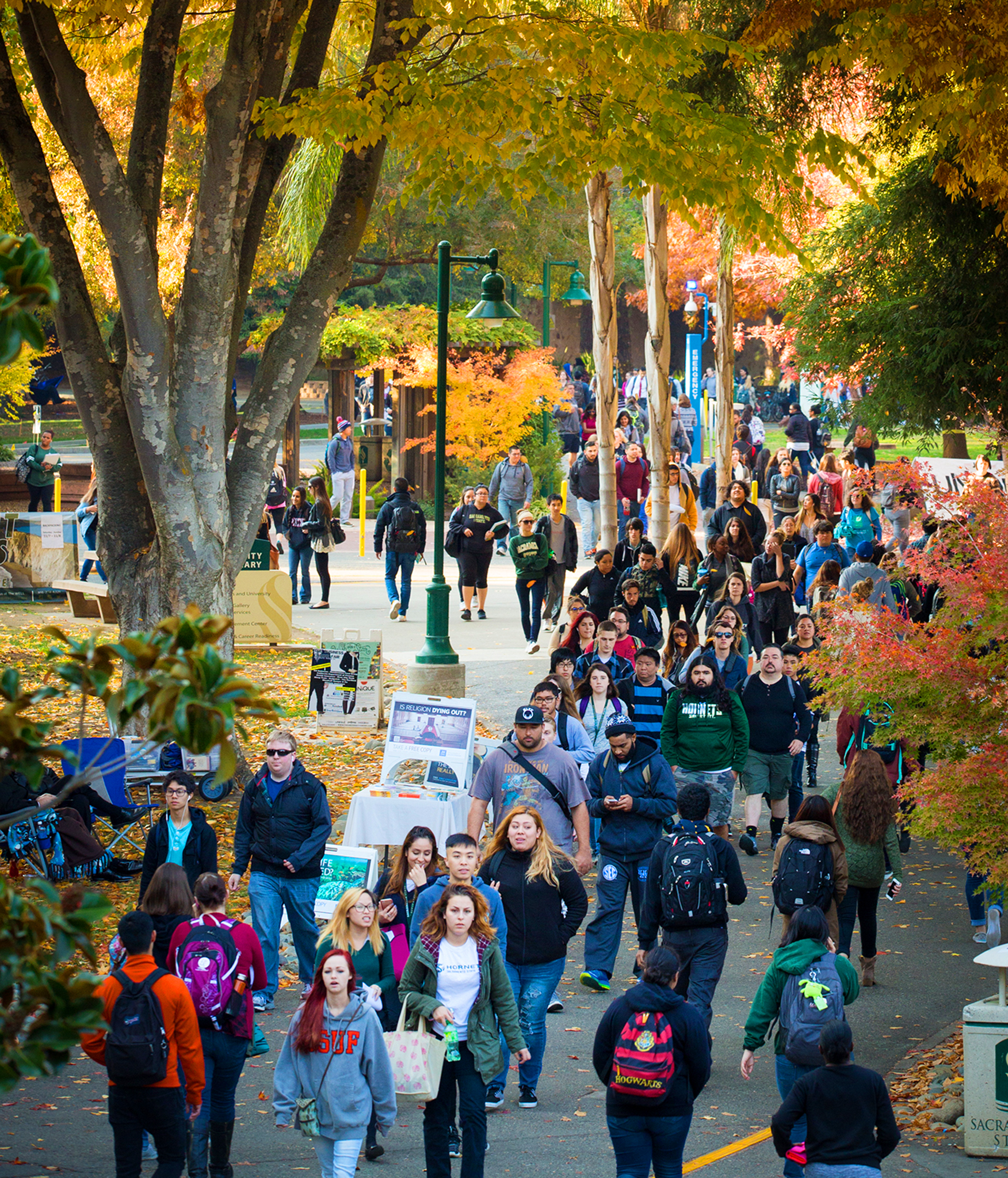 (Sacramento State/Jessica Vernone)
(Sacramento State/Jessica Vernone)The path to a diploma is going to get a little easier for Sacramento State students.
The University has received significant new funding to improve the flow of students through so-called bottleneck courses by upgrading technology and changing the instructional approach in classes required for all students.
Sac State has received $555,982 from the California State University system to help relieve the demand and thus improve graduation rates.
“Bottlenecks can arise from a variety of causes, and usually some combination thereof,” says Sheree Meyer, dean of Undergraduate Studies and campus coordinator for the Course Redesign with Technology Project. Those causes can include limited facilities or faculty.
The grant addresses yet another issue: the demand placed on course access by the number of students who fail the course the first time and need to repeat it.
The CSU has determined that, system-wide, 13 percent of students – about 225,000 – need to retake some prerequisite courses. That means many first-time freshmen have to wait a semester or more to get into these courses, which are required before they can take subsequent courses.
While it’s not the sole impact on graduation rates, that kind of academic congestion is a factor in Sacramento State’s current four-year graduation rate, which is around 9 percent.
The CSU implemented the program in the 2013-14 academic year, but this is the first year that Sacramento State has received such a large portion of the total funding, up $365,823 from last year.
“We appreciate the generosity of the CSU in assisting Sacramento State’s students,” says President Robert S. Nelsen. “Getting more students through what are traditionally known as bottleneck courses is a crucial step in improving our four-year graduation rates.”
The funds will be divided among 52 faculty members. Some will study proven practices already developed to help improve pass rates in the courses. Those studies will be headed by lead faculty from throughout the CSU system. Sacramento State Professor Dennis Dahlquist has been selected to lead the engineering cohort.
Other instructors will work on promising practices, those that show possibilities for relieving the bottlenecks. And some earlier projects received additional funding to continue development.
The methods to redesign courses include:
Flipped classroom
The traditional structure has the instructor delivering content to students through lectures during classroom hours. The students then tackle the second component, problem-solving, through their homework. Meyer notes that a student can find more value if that process is reversed, with the content delivered after hours, possibly online, and the problem-solving taking place in the classroom when an instructor is on hand to help.
Hybrid class
Online and real-time course work can be combined. If there are two sections of the same course that both meet Tuesday and Thursday, they’re taking up two classrooms. Rather than have each of the two classes meet in a separate classroom, have one meet in a classroom on Tuesday and the other in that same room on Thursday. On the day each class is not in a classroom, the information would be delivered online. “Now you’re using the same classroom by two classes, and you’re becoming more efficient,” Meyer says.
Virtual labs
Creating virtual labs for some General Education (GE) courses is another possibility. For example, Geology 7, Natural Disasters, is a very popular GE science class, but it doesn’t have a lab component, so one instructor is working on a virtual lab that would satisfy the requirement. “You need highly specialized, hands-on labs for the majors,” Meyer says, “but you can do something that might be easier on our facilities, faculty, and students for some of these GE programs.”
Other methods, Meyer says, include a greater use of student assistants who can meet with students in small groups or one-on-one in the classroom, as well as online tutoring.
The instructors involved in the project already have gathered several times to work on their redesign proposals and will implement them this spring. They then will chart the progress and results, and submit the data in e-portfolios.
Meanwhile, solutions in other areas are being pursued, such as creating more lab space with the recent approval of Sacramento State’s $91 million science facility, scheduled for groundbreaking next year.
Meyer emphasizes that there are several pieces to the puzzle, and classroom redesign is a necessary piece. “You have to make a difference in the classroom,” she says, adding that this is similar to businesses funding innovation through research and development. “We need that equivalent. We need to give faculty the opportunity, the time, and the goals so that they can find innovations in the curriculum.”
For more information on the Course Redesign with Technology programs, visit www.calstate.edu/courseredesign. For media assistance, call Sacramento State’s Public Affairs office at (916) 278-6156. – Craig Koscho
